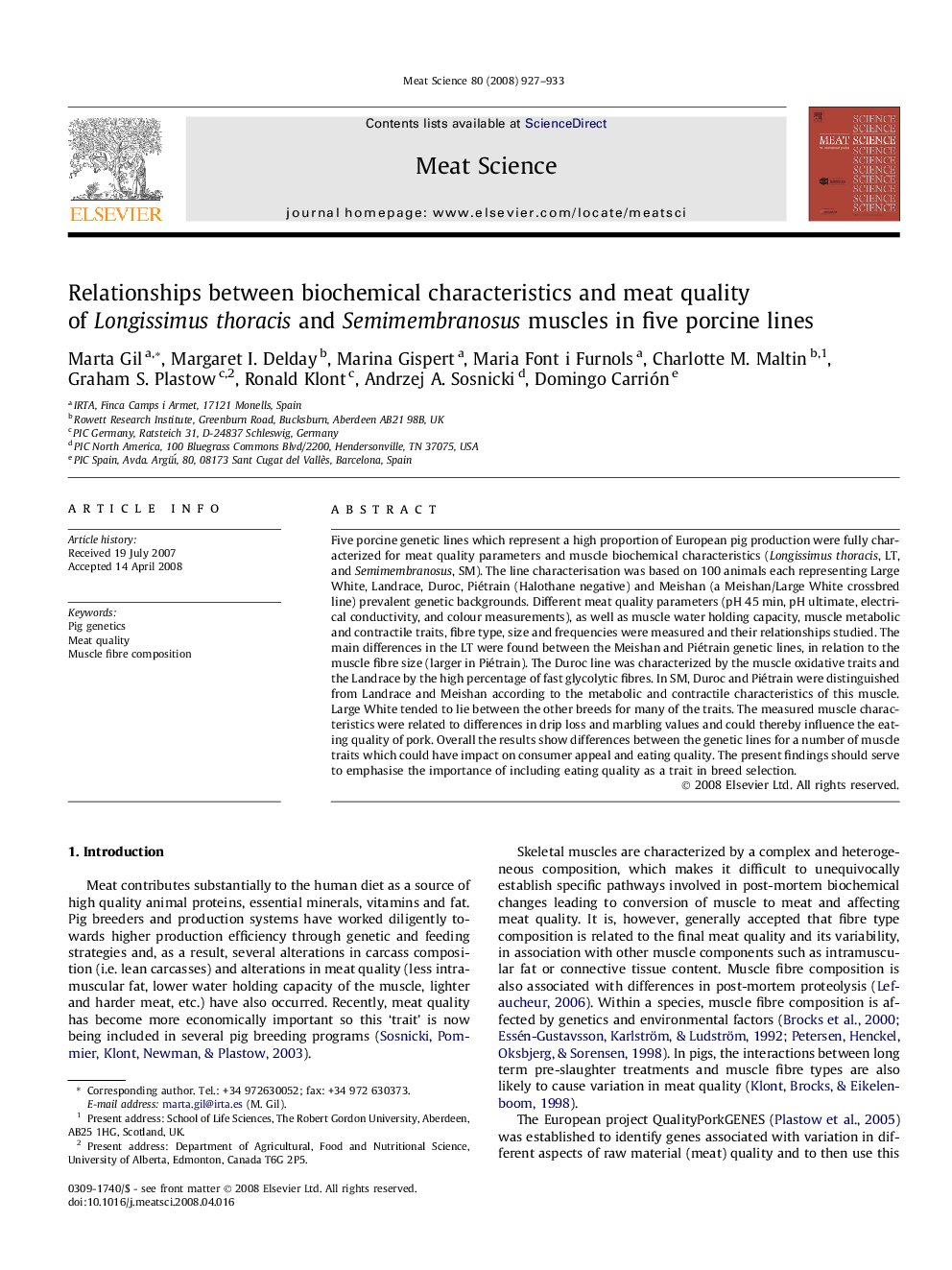| Article ID | Journal | Published Year | Pages | File Type |
|---|---|---|---|---|
| 2451404 | Meat Science | 2008 | 7 Pages |
Five porcine genetic lines which represent a high proportion of European pig production were fully characterized for meat quality parameters and muscle biochemical characteristics (Longissimus thoracis, LT, and Semimembranosus, SM). The line characterisation was based on 100 animals each representing Large White, Landrace, Duroc, Piétrain (Halothane negative) and Meishan (a Meishan/Large White crossbred line) prevalent genetic backgrounds. Different meat quality parameters (pH 45 min, pH ultimate, electrical conductivity, and colour measurements), as well as muscle water holding capacity, muscle metabolic and contractile traits, fibre type, size and frequencies were measured and their relationships studied. The main differences in the LT were found between the Meishan and Piétrain genetic lines, in relation to the muscle fibre size (larger in Piétrain). The Duroc line was characterized by the muscle oxidative traits and the Landrace by the high percentage of fast glycolytic fibres. In SM, Duroc and Piétrain were distinguished from Landrace and Meishan according to the metabolic and contractile characteristics of this muscle. Large White tended to lie between the other breeds for many of the traits. The measured muscle characteristics were related to differences in drip loss and marbling values and could thereby influence the eating quality of pork. Overall the results show differences between the genetic lines for a number of muscle traits which could have impact on consumer appeal and eating quality. The present findings should serve to emphasise the importance of including eating quality as a trait in breed selection.
